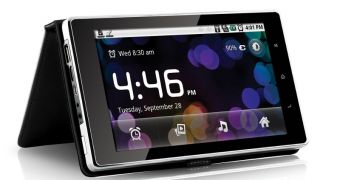Back in the day (well, around three or fours years ago, to be precise) when PMPs were still some of the hottest gadgets around and everyone was curious who's gonna come up with an iPod killer, Coby managed to keep itself in the headlines by rolling out a very nice series of portable multimedia players, most of which delivered some pretty interesting features without really going overboard in terms of pricing. And although they've kept rather low-key since then, it seems that Coby really wants back in the spotlight, since the've decided to tackle the Internet tablet segment head-on, by launching the Android 2.1-powered, GSM-less 7-inch Kyros Tablet. The device is powered by an ARM1176 CPU running at 800 Mhz, accompanied by 4GB of Flash memory (expandable up to 32GB), which allows it to run Full HD, 1080p videos, beside the more “mundane” tasks you'd expect from it, such as browsing the web with the help of the built-in IEEE 802.11 b/g module (sorry, no 3G option here). The 7-inch resistive touchscreen sports a 800 x 480 pixels resolution (not really Full HD material), but in order to deliver on the promise of 1080p playback, the Coby Kyros sports a mini HDMI port, which allows users to watch videos on a widescreen HDTV. Other connectivity options include the 3.5mm headphone and full-size USB port, while the tablet also sports a built-in speaker, plus a 3600mAh rechargeable Li-poly battery. The device also comes pre-loaded with a couple of included apps, such as an alarm clock, browser for surfing the web, calculator, email, gallery for viewing and playing videos, music and video player for launching the mobile YouTube browser page to watch Internet videos. In addition, the Kyros offers two unique apps, the Aldiko E-Book, for downloading and reading thousands of e-books (which supports the ePub standard) and AppsLib, to browse, download and install apps from the AppsLib marketplace for a complete mobile Internet solution. Pricing for Coby's Kyros tablet has been set at around $299.99, which is not exactly a small sum, but it is, nevertheless, a lot less than what customers would have to pay for similar devices coming from some much better-known brands.
hot right now

 14 DAY TRIAL //
14 DAY TRIAL //